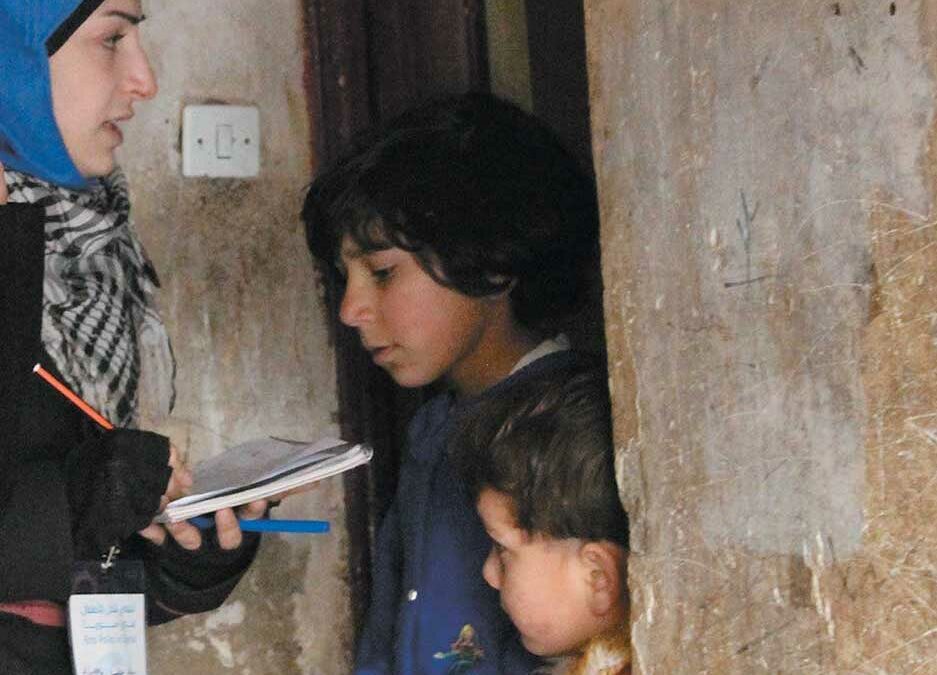Hosam Katan/Reuters
A health worker talking with a family in Aleppo before administering polio vaccinations, January 2014
Article initially published in The New York Review on February 20, 2014 and written by Annie Sparrow.
One way to measure the horrific suffering of Syria’s increasingly violent war is through the experience of Syrian children. More than one million children are now refugees. At least 11,500 have been killed because of the armed conflict, well over half of these because of the direct bombing of schools, homes, and health centers, and roughly 1,500 have been executed, shot by snipers or tortured to death. At least 128 were killed in the chemical massacre in August.
In the midst of all this violence, it is easy to miss the health catastrophe that has also struck Syrian children, who must cope with war trauma, malnutrition, and stunted growth alongside collapsing sanitation and living conditions. Syria has become a cauldron of once-rare infectious diseases, with hundreds of cases of measles each month and outbreaks of typhoid, hepatitis, and dysentery. Tuberculosis, diphtheria, and whooping cough are all on the rise. Upward of 100,000 children are stigmatized by leishmaniasis, a hideous parasitic skin disease that flourishes in war. Many of these diseases have already traveled beyond Syria’s borders, carried by millions of refugees. Five million more children have been forced out of their homes but are still living within Syria, increasingly vulnerable to early marriage, trafficking, and recruitment as child soldiers.
And now polio is back. Since May, Syrian doctors and international public health agencies have documented more than ninety cases of polio in seven of Syria’s fourteen administrative districts, or governorates: Deir Ezzor, Aleppo, Idlib, Hama, Damascus, al-Hasakeh, and Ar-Raqqa. At an average age of just under two, most victims are—or used to be—literally toddlers. Few were fully vaccinated. None has had treatment to prevent paralysis from becoming permanent. All are from areas long opposed to the Assad regime, which reflects the political dimension of the outbreak. Not a single case has occurred in territory controlled by the government.
Once the most feared disease of the twentieth century, polio in most countries had long ago passed into the history books. Syria was no exception. Polio was eliminated there in 1995 following mandatory (and free) immunization introduced in 1964 after the Baath party took power. Yet wildtype 1 polio—the most vicious form of the disease—has been confirmed across much of Syria.
Read full article on nybooks.com


Recent Comments